Tongan government confirms all homes on Mango destroyed, fears death toll to rise
Tuesday 18 January 2022 | Written by RNZ | Published in Regional, Tonga

AFP PHOTO / Satellite image ©2022 Maxar Technologies
The Tongan government has confirmed that all houses on the island of Mango were wiped out in the tsunami that followed Saturday's volcanic eruption.
It confirmed that three people are now known to have died: a 65-year-old woman in Mango and a 49-year-old man in Nomuka, both in the outlying Ha'apai island group; as well as British national Angela Glover in Tongatapu.
The Tongan navy had deployed with health teams and water, food and tents to the Ha'apai islands.
One aerial image taken by the New Zealand Defence Force (NZDF) showed Mango and described the damage there as "catastrophic".
No houses, but just a few temporary tarpaulin shelters could be seen.
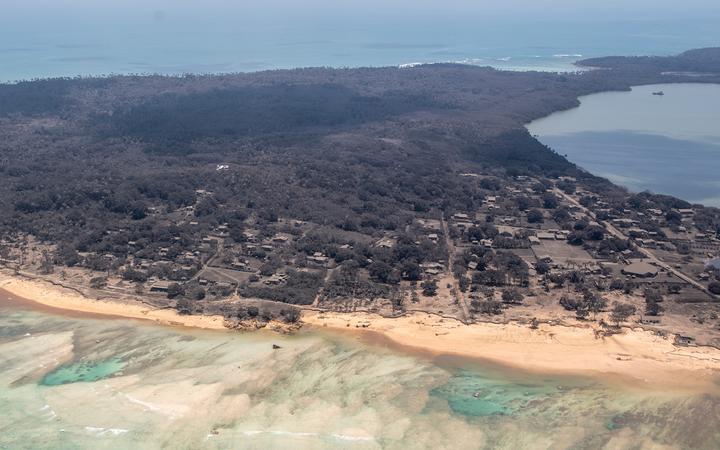
The Tongan government said Mango, Atata, and Fonoifua islands were being evacuated, and that water supplies in Tonga were seriously affected. It said all houses were destroyed on Mango Island, only two houses remained on Fonoifua and extensive damage occurred on Nomuka Island.
The government also said there were multiple injuries.
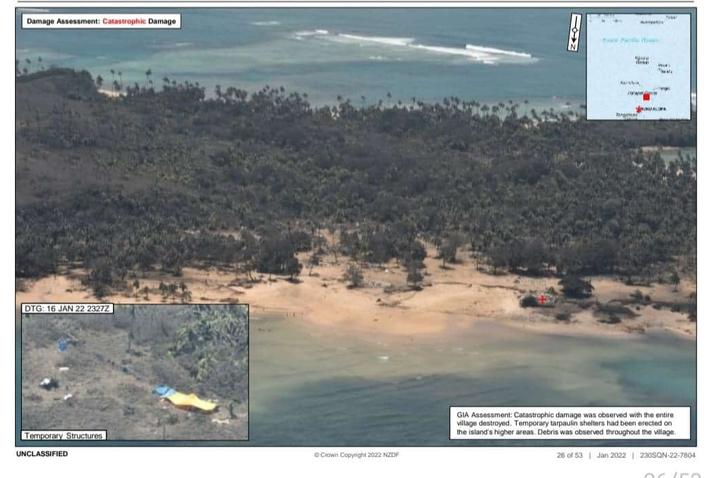
It is the first official statement the kingdom has made about the disaster to international media.
The government said parts of the western side of Tongatapu, including Kanokupolu, were being evacuated after dozens of houses were damaged, and that in the central district many houses were damaged in Kolomotu'a and on the island of 'Eua.
A diplomat, Tonga's deputy head of mission in Australia, Curtis Tu'ihalangingie, earlier described the images taken by the NZDF reconnaissance flight as "alarming", saying they showed numerous buildings missing on Atata island as well.
"People panic, people run and get injuries," Tu'ihalangingie told Reuters. "Possibly there will be more deaths and we just pray that is not the case."
With communications in the South Pacific island nation cut, the true extent of casualties is still not clear.
Ms Glover, 50, was the first known death in the tsunami, swept away as she tried to rescue the dogs she cared for at a shelter.
Australia's Minister for the Pacific Zed Seselja said conditions on other outer islands were "very tough, we understand, with many houses being destroyed in the tsunami".
The United Nations had earlier reported a distress signal was detected in Ha'apai, where Mango is located.
The Tongan navy reported the area was hit by waves estimated to be 5m-10m high, said the UN Office for the Co-ordination of Humanitarian Affairs.
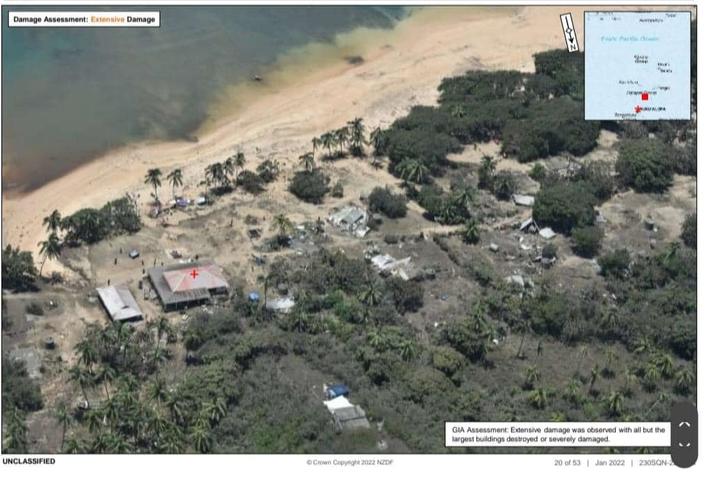
Atata and Mango are between 50km and 70km from the Hunga Tonga-Hunga Ha'apai volcano, which sent tsunami waves across the Pacific Ocean and was heard some 2300km away in New Zealand when it erupted on Saturday.
Atata has a population of about 100 people and Mango about 50 people.
"It is very alarming to see the wave possibly went through Atata from one end to the other," Tu'ihalangingie said.
The NZDF images were posted unofficially on a Facebook site and confirmed by Tu'ihalangingie.
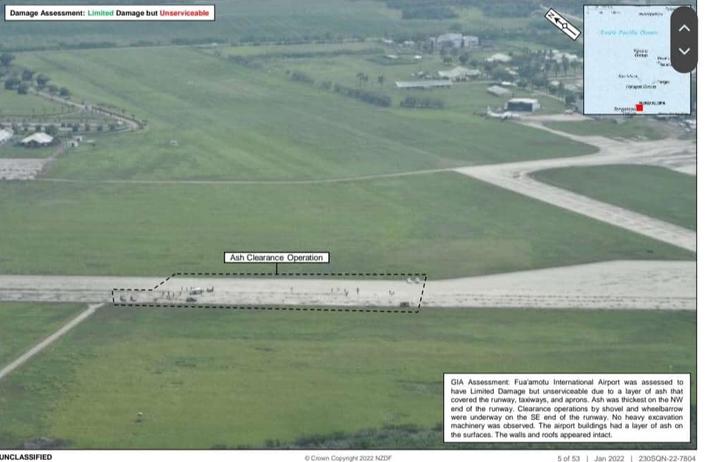
Taken from a P-3K2 Orion plane, they also showed workers on the runway clearing volcanic ash at Fua'amotu International Airport, the country's main airfield.
One caption described the runway as "unserviceable" because of the layer of ash on it, meaning aircraft cannot land there.
It said the clearance operation was being done with shovels and wheelbarrows, and that "no heavy excavation machinery was observed".
The Tongan government said wharves were also damaged in the eruption.
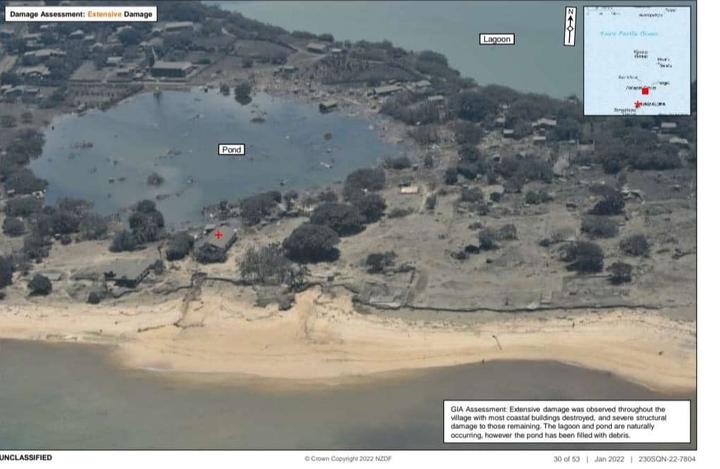
'We try to keep a positive mind'
Aucklander Lavinia Faleofa's uncle, cousin and in-laws live on Nomuka island in one of the closest villages to the volcano, just 70km to the north-east.
Faleofa's aunt is with her in New Zealand, and had been due to catch a repatriation flight back to the island this week.
The family last spoke to their relatives on Friday, when they talked about their aunt finalising the paperwork for her aunt's flight home.
"There was no thoughts that we would not be speaking after that conversation," Faleofa told RNZ.
The family have tried to reach their relatives online and have made repeated calls to their home phone.
"We know that it's down, but we know that there's always that hope that you might call, it might ring, and they might answer.
"We try to keep a positive mind, we are trying to be optimistic."
She hoped her uncle and family were able to move inland from their house which faces one of the beaches.
Faleofa said Nomuka was unrecognisable in the aerial images taken after the eruption which had covered the colourful rooftops and white sand with grey ash.
"I can't come to fathom that, that is what it looks like right now.
"I've never seen anything like it".
Faleofa's aunt has been on a rollercoaster of emotions, she said. "Without anybody telling us we already knew that there was no way in a couple of weeks that she'd be going back."
- Reuters / RNZ












































